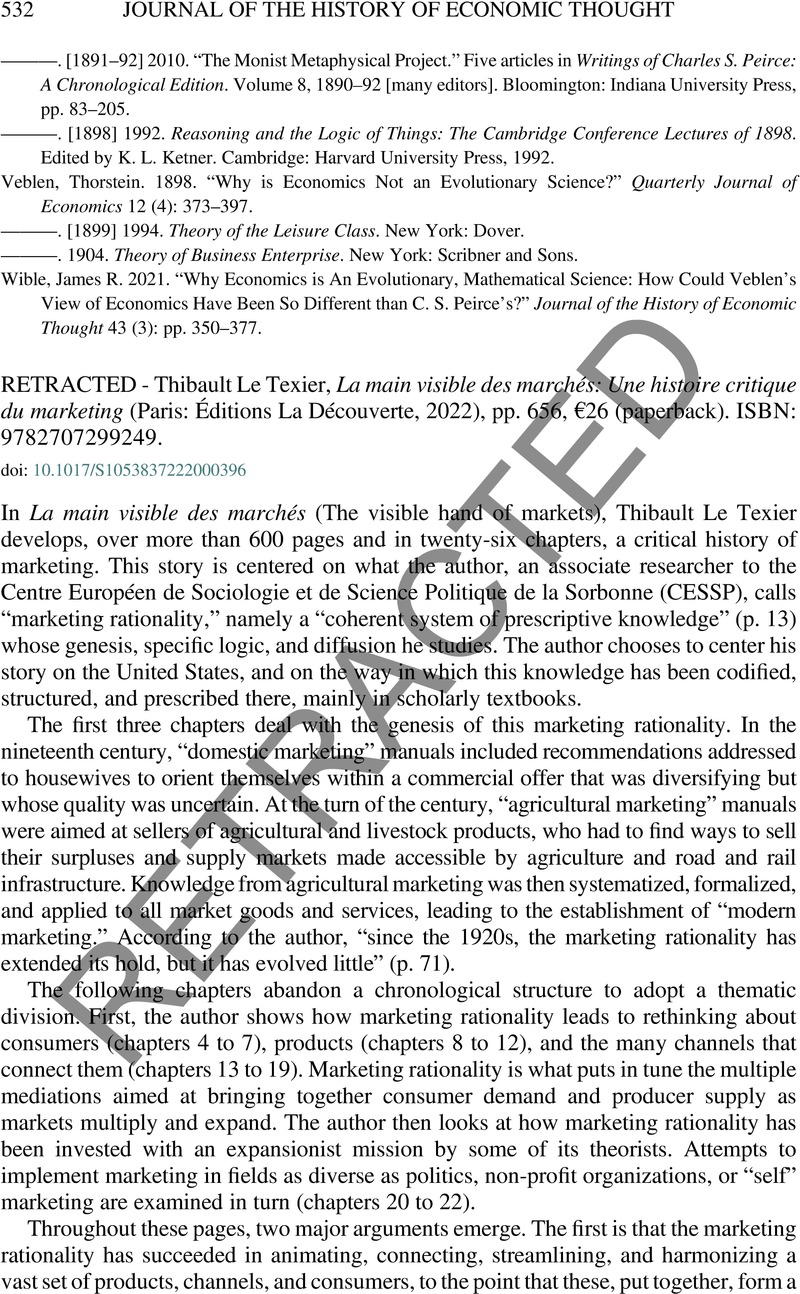No CrossRef data available.
Article contents
RETRACTED ‐ Thibault Le Texier, La main visible des marchés: Une histoire critique du marketing (Paris: Éditions La Découverte, 2022), pp. 656, €26 (paperback). ISBN: 9782707299249.
Review products
RETRACTED ‐ Thibault Le Texier, La main visible des marchés: Une histoire critique du marketing (Paris: Éditions La Découverte, 2022), pp. 656, €26 (paperback). ISBN: 9782707299249.
Published online by Cambridge University Press: 30 January 2023
Abstract
An abstract is not available for this content so a preview has been provided. Please use the Get access link above for information on how to access this content.

- Type
- Book Review
- Information
- Copyright
- © The Author(s), 2023. Published by Cambridge University Press on behalf of the History of Economics Society
References
REFERENCES
Araujo, Luis, Finch, John, and Kjellberg, Hans, eds. 2010. Reconnecting Marketing to Markets. Oxford: Oxford University Press.CrossRefGoogle Scholar
Chessel, Marie-Emmanuelle. 1998. La publicité: Naissance d’une profession (1900–1940). Paris: CNRS.CrossRefGoogle Scholar
Cochoy, Franck. 2014. Aux origines du libre-service. Progressive Grocer (1922–1959). Lormont: Le Bord de l’eau.Google Scholar
Cochoy, Franck, and Dubuisson-Quellier, Sophie. 2013. “The Sociology of Market Work.” Economic Sociology:_The European Electronic Newsletter 15 (1): 4–11.Google Scholar
Cohen, Lizabeth. 2003. A Consumers’ Republic: The Politics of Mass Consumption in Postwar America. New York: Alfred A. Knopf.Google Scholar
Fligstein, Neil. 1990. The Transformation of Corporate Control. Cambridge: Harvard University Press.Google Scholar
Geiger, Susi, Harrison, Debbie, Kjellberg, Hans, and Mallard, Alexandre, eds. 2014. Concerned Markets: Economic Ordering for Multiple Values. Cheltenham: Edward Elgar Publishing.CrossRefGoogle Scholar
Johnson, David K. 2019. Buying Gay: How Physique Entrepreneurs Sparked a Movement. New York: Columbia University Press.CrossRefGoogle Scholar
Le Texier, Thibault. 2011. “La rationalité managériale: de l’administrations domestique à la gouvernance.” PhD diss., University of Nice.10.3917/rfse.009.0275eCrossRefGoogle Scholar
Zwick, Detlev, and Cayla, Julien, eds. 2011. Inside Marketing: Practices, Ideologies, Devices. Oxford: Oxford University Press.CrossRefGoogle Scholar
A retraction has been issued for this article:
Linked content
Please note a has been issued for this article.


